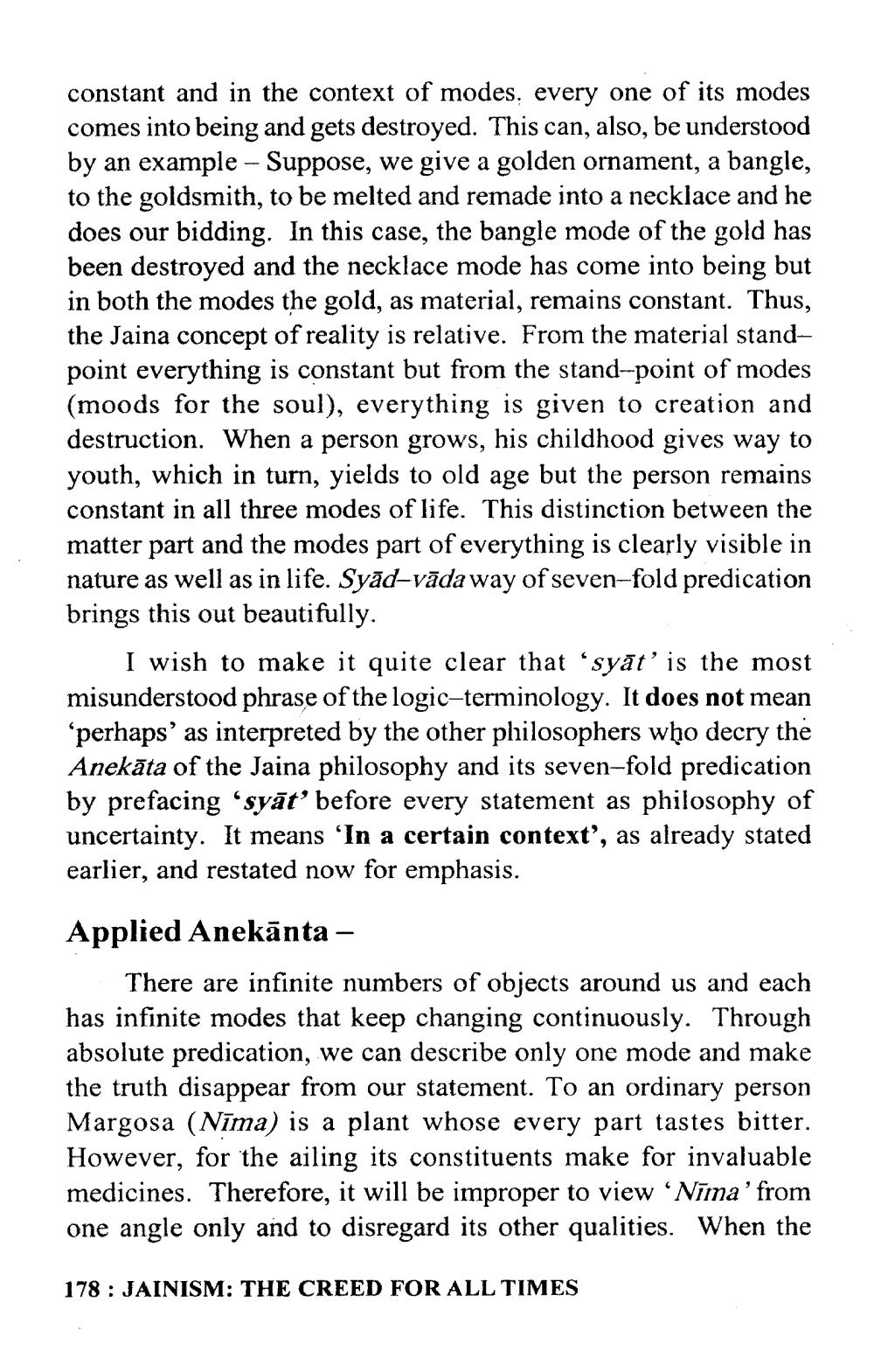________________
constant and in the context of modes, every one of its modes comes into being and gets destroyed. This can, also, be understood by an example - Suppose, we give a golden ornament, a bangle, to the goldsmith, to be melted and remade into a necklace and he does our bidding. In this case, the bangle mode of the gold has been destroyed and the necklace mode has come into being but in both the modes the gold, as material, remains constant. Thus, the Jaina concept of reality is relative. From the material standpoint everything is constant but from the stand-point of modes (moods for the soul), everything is given to creation and destruction. When a person grows, his childhood gives way to youth, which in turn, yields to old age but the person remains constant in all three modes of life. This distinction between the matter part and the modes part of everything is clearly visible in nature as well as in life. Syād-vāda way of seven-fold predication brings this out beautifully.
I wish to make it quite clear that 'syāt' is the most misunderstood phrase of the logic-terminology. It does not mean 'perhaps' as interpreted by the other philosophers who decry the Anekāta of the Jaina philosophy and its seven-fold predication by prefacing 'syāt' before every statement as philosophy of uncertainty. It means 'In a certain context', as already stated earlier, and restated now for emphasis.
Applied Anekānta -
There are infinite numbers of objects around us and each has infinite modes that keep changing continuously. Through absolute predication, we can describe only one mode and make the truth disappear from our statement. To an ordinary person Margosa (Nīma) is a plant whose every part tastes bitter. However, for the ailing its constituents make for invaluable medicines. Therefore, it will be improper to view ‘Nima’from one angle only and to disregard its other qualities. When the
178 : JAINISM: THE CREED FOR ALL TIMES




